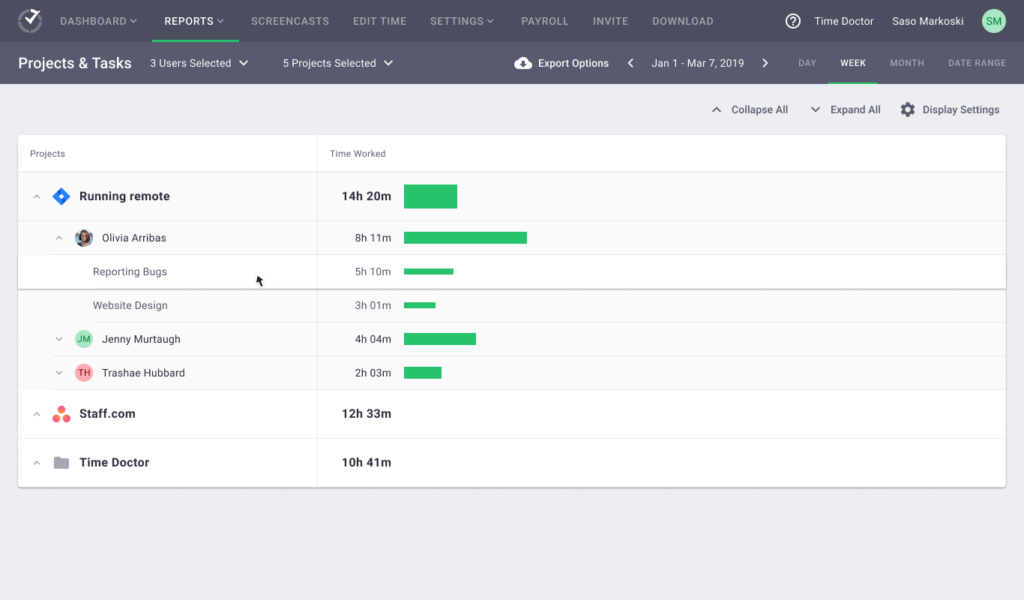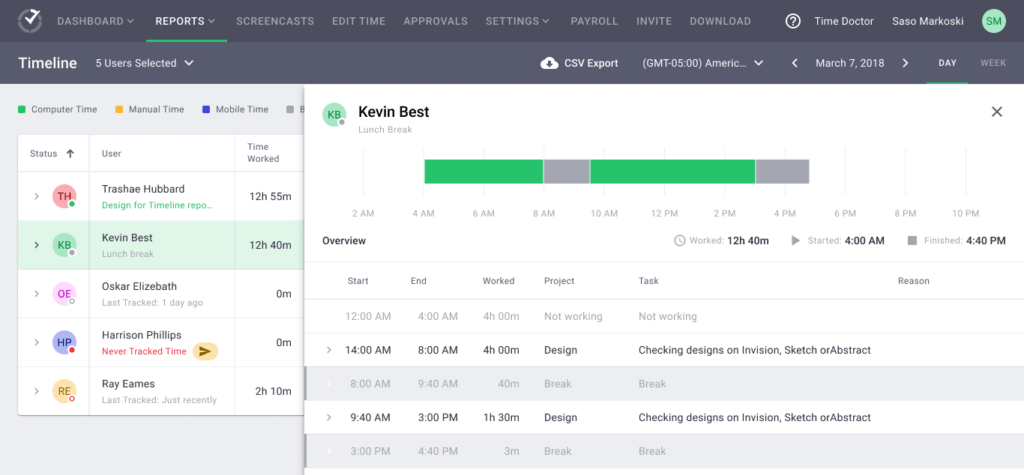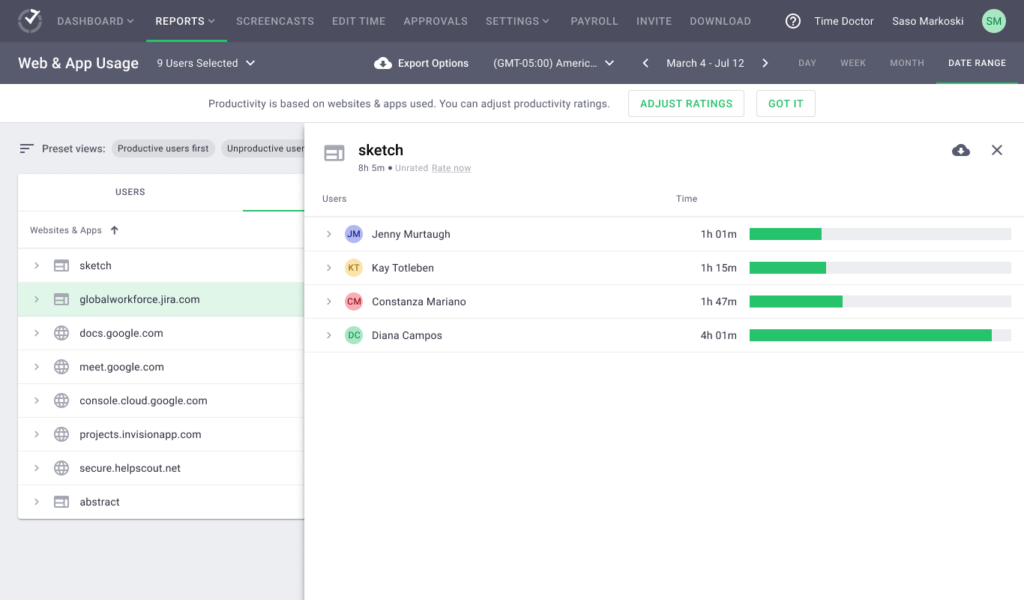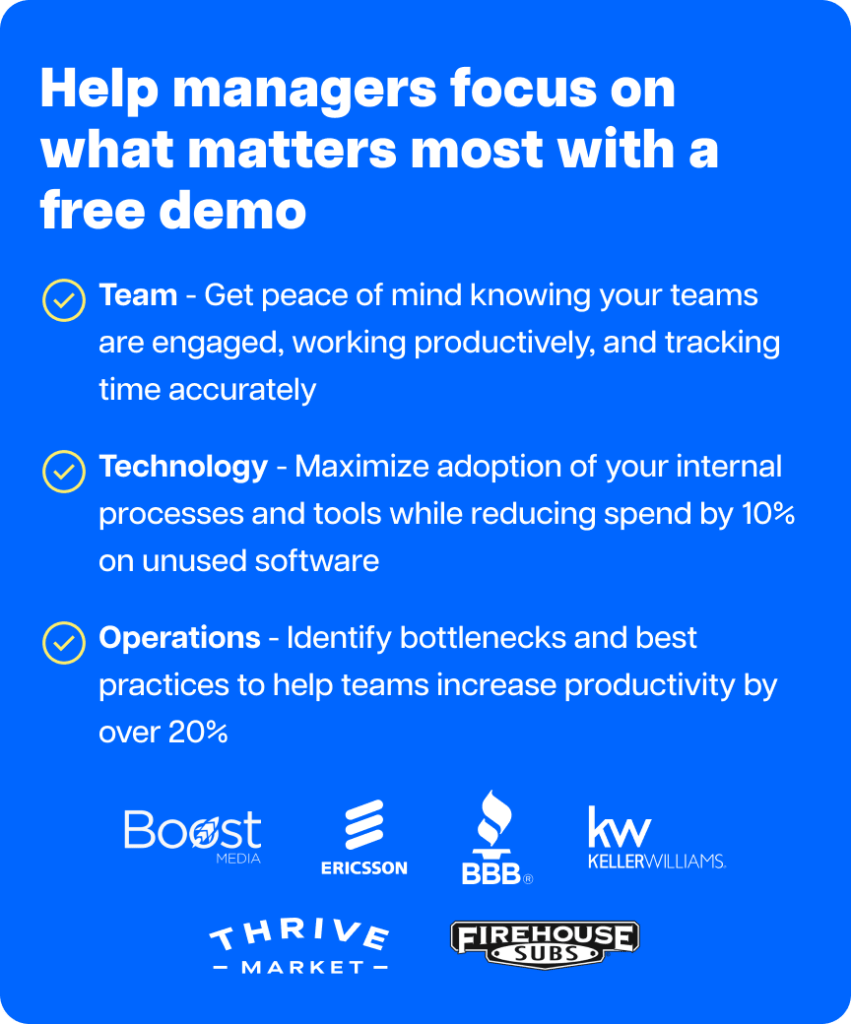Some companies that experimented with remote work during the pandemic are now eager to have employees return to the roost. But just because you’ll be seeing offices and work sites humming with humans again, doesn’t mean you’ll have a better grasp of employee performance, engagement or wellbeing.
New tools and processes adopted to manage people working from home (like Time Doctor), offer deep insights into team behaviors and outputs that on-site managers don’t have the time or ability to observe.
Extending the use of such systems to include in-office employees is exactly what many organizations need to transform their employee value proposition, enhance productivity, and run a more profitable operation.
In-office performance is not optimal, but do you know why?
Bringing your team together physically has never been a panacea for workplace challenges. It won’t solve talent shortages across sought-after skill sets, record-low levels of engagement and motivation, or increasing stress and burnout.
In fact, because workers around the globe are clamoring for flexible arrangements — a return to the office may create additional difficulties in keeping top talent and fostering a positive and productive culture.
Of course, there are valid reasons for on-site work: organizations may feel better equipped to leverage existing resources and facilities, manage access to equipment/devices, enforce standards or safety protocols, coordinate collaboration and uplift culture, such as through in-person events.
But, no matter where your team is working — you’ll benefit from deeper and more systematic approaches to understanding how they spend their work days, and how to optimize productivity and performance.
More data is a competitive driver, and in-office employee data is no exception

There’s a mistaken belief that using software to monitor the activity of teams working in a physical office is overkill. Especially when you have real-time visibility of what’s happening — care of your frontline managers.
Some common falsehoods organizations tell themselves about managing in-person teams include:
- Managers will be able to identify and address issues more easily on-site
- You can spot who’s hard-working by who’s at their desk and how late they stay
- Leaders can objectively get a feel for performance without authentic data to back it up
The problem is: most managers have too many direct reports to invest adequate time into understanding or coaching them, and rarely get the professional development or data they need to lead confidently. The Center for Creative Leadership says many managers feel overwhelmed right from the start of their tenure in a leadership position, contributing to the fact that up to 50% of managers are ineffective.
When it comes to knowledge work that predominantly happens digitally, it’s a fallacy to believe you have greater visibility of a person’s performance simply because you can see them sitting at a desk.
Managers roaming the halls can’t see at a glance how much time an employee spends on different tasks within your project management software, or get a holistic view of their most productive periods across a working day or week. You need consistent measurement across your team that delivers hard data.
Employee monitoring of your on-site workforce is a more reliable way to empower both managers and individual employees to understand what’s happening during the workday.
A clear example of how employee monitoring lifts productivity in-office

A growing customer service outsourcing company with locations in the US and the Philippines adopted Time Doctor because it wanted to deepen its competitive advantage by fully leveraging the skills and enthusiasm of workers using its state-of-the-art office space.
The BPO believed employee monitoring and attendance tracking would reinforce its strong culture of honesty, and help identify knowledge/process gaps or inefficiencies.
And, it worked. Its in-office team became more accountable, aligned with processes, and productive — up to 25% more productive in some cases. With a detailed understanding of how employees use their time and different tools and apps, the company has had greater success in streaming processes and offering targeted training to up-skill workers.
The BPO’s managers can spend more time on transformative leadership initiatives rather than micromanaging, because they have a quick and reliable online tool to check that people are present, focused on important tasks, and taking appropriate breaks.
What you can measure with Time Doctor in-office that you wouldn’t otherwise see

Time Doctor provides metrics that you can’t easily collect just by being in the same building as your employees. Time Doctor lets you precisely track the amount of time spent on different activities, tasks and apps that make up each employees’ workday. It also surfaces patterns of work and behaviors that give you a big picture view of productivity, performance, compliance and wellbeing.
Using Time Doctor to monitor in-office workers enables you to:
- Digitally capture and verify your team’s attendance and logins
- Know the mix of tasks and projects in each employees workload
- Gauge the time needed for different tasks under various project types
- Ensure the accuracy of your payroll and client billing processes
- Benchmark the performance and outputs you can expect in certain roles
- Identify unauthorized usage of certain apps and sites
- Know which apps and websites used actually drive performance and productivity
- Get a true understanding of inactive time and breaks taken
- Identify compliance risks related to overworking or missed breaks
- Prevent burnout sooner by identifying unhealthy routines or workloads
- Better understand internal workarounds and issues with processes
- Get reliable benchmarking data about productivity to improve over time
An obvious use case is knowing how much time your employees actually spend scrolling social media feeds (employees not in marketing roles, that is). But clarity on the extent of time-wasting is just the tip of the iceberg — you can make company-wide savings through more strategic scheduling, operations, purchasing, resourcing and training.
For instance, Time Doctor’s Web & App Usage Report can help you spot whether software you pay subscriptions for isn’t being used, or is being used sub-optimally. That could considerably slash your IT costs or help you deliver more targeted coaching and training to help people use tools more efficiently.
A hybrid, agile future: time and activity tracking improves all work spaces
It’s likely most organizations will combine remote and on-site work in some way in the years ahead according to a survey of executives by McKinsey. What’s more, McKinsey found organizations benefiting from increased productivity through a hybrid approach are those that continually tweak their processes and management styles to match this new work paradigm.
Time Doctor is a system that supports growth by helping you:
- Introduce more automated, data-informed people management as part of your larger digital transformation journey.
- Lead with greater objectivity and adapt more easily to changed conditions, laying the foundation for an inclusive, empowered and innovative workforce.
- Benchmark your productivity and performance over time and achieve a repository of comprehensive and easily scrutinized workday insights to guide improvement.
Having consistent and scalable approaches to evaluating and managing productivity, performance, culture and wellbeing regardless of where people work just makes good business sense.
If you recognize the need to keep evolving your business model and management approaches to remain competitive, expanding employee monitoring introduced for remote work across your in-office team will further future-proof your organization.

Amy Owens is a product marketing enthusiast with a passion for writing content that communicates the features, values, and benefits of products.


